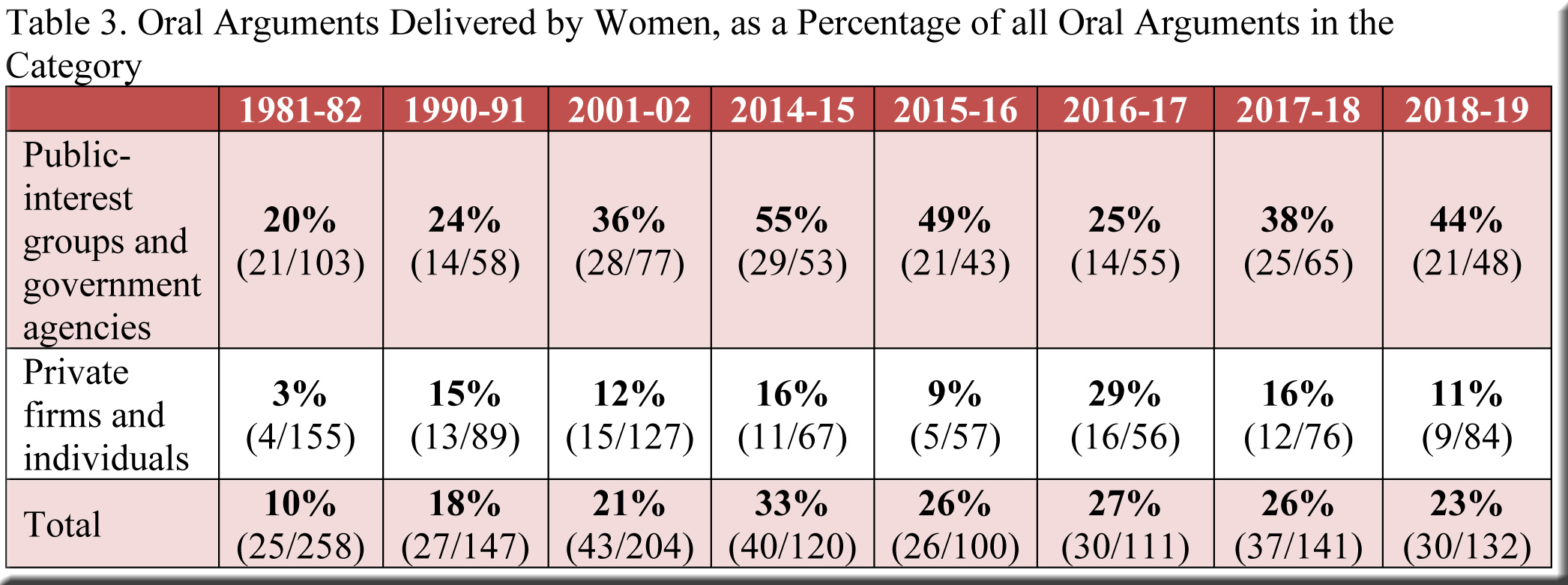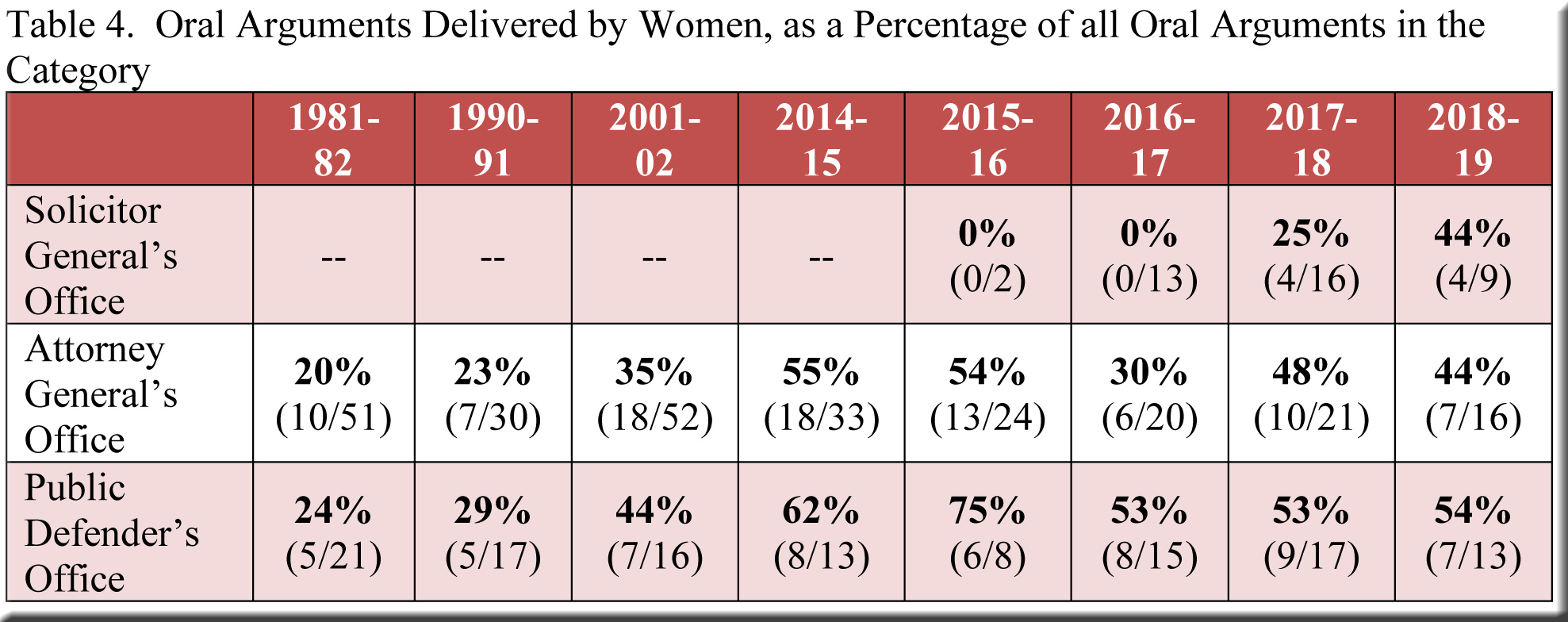The most recent post in this series showed that, although women conducted a rapidly increasing share of oral arguments at the supreme court from 1981-82 (10%) through 2014-15 (33%), the acceleration did not continue during the next two terms—and, indeed, the rate dropped back below 30%. Now that two more terms have passed, we’ll revisit the topic to discover what transpired in 2017-18 and 2018-19.
As illustrated in Table 1, the rate of women’s participation in oral arguments not only failed to return to the mark of 2014-15, it slipped even further by 2018-19, receding to a level (23%) close to that of 2001-02.[1]
The previous post also underscored significant changes for the two categories featured in Table 2—“public-interest groups and government agencies” and “private firms and individuals.”[2] More specifically, women in public-interest groups and government agencies had for decades delivered oral arguments at a much higher rate than did their counterparts in the second category—until 2016-17, when the public-interest/government percentage plunged, and the private-firm percentage soared.
With this as its endpoint, the previous post left open the question of whether the figures for 2016-17 were an aberration—and we can now say that they apparently were. Table 3 extends Table 2 by adding columns for 2017-18 and 2018-19, and they show the public-interest/government percentage again climbing far above the shrinking private-firm percentage.
Meanwhile, throughout the decades under consideration, the Department of Justice (which includes the Attorney General’s Office and the Solicitor General’s Office) along with the Office of the State Public Defender have been the most active players in these tables, together accounting for the overwhelming majority of oral arguments in the public-interest/government group. In 2018-19, for example, female attorneys from the two agencies handled 86% of the oral arguments presented by women in this category.
Over the past three terms the percentage of Public Defender oral arguments conducted by women has remained essentially constant, but the Department of Justice has witnessed some notable changes (Table 4). For instance, one of the factors that held down the public-interest/government percentage in 2016-17 was the complete absence of women venturing to deliver oral arguments on behalf of the Solicitor General. During the next two terms, though, this percentage began to increase, and by 2018-19 women from the Solicitor General’s Office were participating in oral arguments at the same rate as did women from the Attorney General’s Office.
Thus, the abolition of the Solicitor General’s Office by the legislature following the election of Governor Tony Evers is unlikely to affect the percentage of women emerging from the Department of Justice to present oral arguments in 2019-20. Of course, surprises are always possible—as 2016-17 demonstrated—so we’ll return in a couple years to cast our nets again.
[1] The data include oral arguments in cases that were decided during the specified terms. I did not compile data for terms other than those included in the tables.
[2] As noted in the preceding post, the phrase “public-interest groups and government agencies” includes such organizations as Legal Action of Wisconsin, the University of Wisconsin’s Remington Center, the Wisconsin Institute for Law and Liberty, the Wisconsin Department of Justice, the Office of the State Public Defender, and various city and county attorneys’ offices.




Speak Your Mind